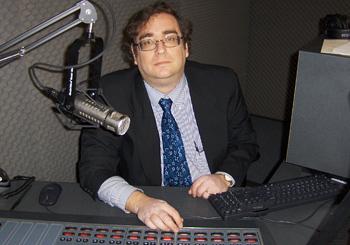AES Blends the New with the Established
NEW YORK
The program of sessions and workshops is taking shape for the 127th AES Convention, which will be held in New York, Oct. 9-12. This year, David Bialik, celebrating his 21st consecutive year as Broadcast Chair, has expanded the scope to also include webcasting.
"This year it's called Broadcast and Stream-ing Sessions," he said. "I insisted that streaming is just as important, if not more so, than broadcast."
The automobile has been one of the driving forces (pun intended) behind the expansion of the listener base for surround sound music, which is distributed on certain satellite radio channels and via Neural Audio and other codecs. Bialik believes that automakers will also play their part in the migration of streaming audio into vehicles.
"You have to remember that the car companies are working very hard to put a Web GUI into the car," he says. "When you bring a Web GUI into the car it's going to level the playing field between the broadcasters and the streamers."
WIDER FOCUS

David Bialik Bialik is putting together a program that covers all the bases in broadcast and streaming audio, as far as possible: "Obviously we can't cover every aspect, but we're trying to touch on all of them. We're planning to have sessions that will cover from facility design, program production, inception and content, to processing, distribution and the audience experience."
There will be a number of innovative sessions as a result of the wider focus of this year's program, including "Audio Processing for Internet Streaming."
"This is the first time I can remember of any major show dedicating a full session to audio processing for streaming. We're going to have all the major players; it should be good," said Bialik.
Ray Archie, director, streaming operations at CBS Radio of CBS, will chair a session called "Stream Playback and Distribution." "One of the major things about Internet streaming is that you have to worry about what player people are using and also how you are distributing your stream," Bialik said.
"Innovations in Digital Broadcasting" will cover radio for the deaf, surround sound, HD channels for radio and television, and other nascent technologies and formats. On the subject of new tech, Jim Kutzner, chief engineer for PBS, will demonstrate Mobile DTV, which is currently being tested in several markets, in a separate session.
DESIGN & INFRASTRUCTURE
A couple of sessions will present under-exposed topics, including the production of a television show, according to Bialik. "I've got the people from 'One Life to Live,' and 'All My Children' working on putting that together. It's never been looked at from the soap opera aspect, and that's probably one of the busiest audio jobs you can have."
Skip Pizzi, media technology consultant and contributor to TV Technology sister publication Radio World is organizing "Audio for News Gathering." "That's going to cover radio and television as well as streaming," said Bialik. "I can't remember the last time someone has done a session on audio for news gathering."
In the session "Studio Design and Acoustics: A Case Study," Bialik, along with John Storyk, have assembled a panel to discuss the practicalities of designing a fictional media facility. "We're going to have all the people involved, from John, an acoustician, to someone doing HVAC, someone doing wiring, someone doing furniture," Bialik said. "We're going to do it in a mock court setting. It should be fun."
As for infrastructure, there will be a two-part session, "Digital Audio Networking In and Out of the Studio."
"Part one is going to be audio networking in the studio, like the use of IP audio for consoles and routing systems and so forth," Bialik said. "Part two is going to be audio out of the studio—the use of codecs, digital STLs and so forth." Additionally, Andy Butler, CPBE from PBS has organized the session "Signal Management for Digital Television."
As for the listener experience, there will be a session focusing on audience retention that will include psychology professor Ellen Sheffield. "We're doing a session on listener fatigue and longevity. That's a pretty popular session as well," Bialik said.
Indeed, certain topics have become perennials at the AES Convention. "I have Jonathan Abrams of Nutmeg Studios chairing a session called the 'Lip Sync Issue,' which has been pretty popular and has only gotten to become a bigger and bigger issue. As the screens get larger people are noticing that they're hearing the words but they're not matching the lips. We've highlighted that issue for the last three or four conventions," notes Bialik.
Another popular session from previous shows, making another appearance, will be on the art of sound effects.
"We're trying to make the broadcast and streaming sessions the essential destination of the broadcast and streaming engineer," Bialik said.
The professional video industry's #1 source for news, trends and product and tech information. Sign up below.
